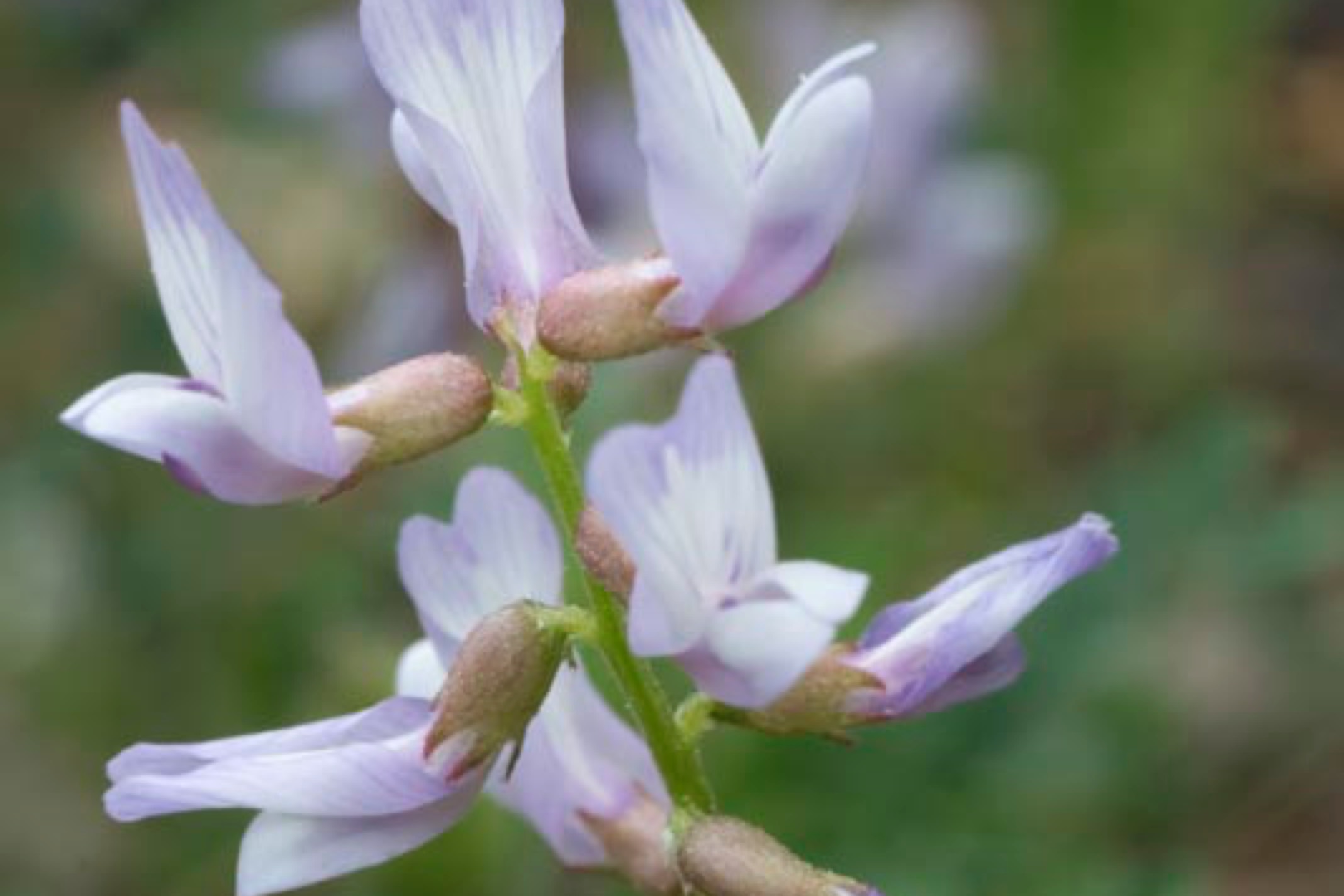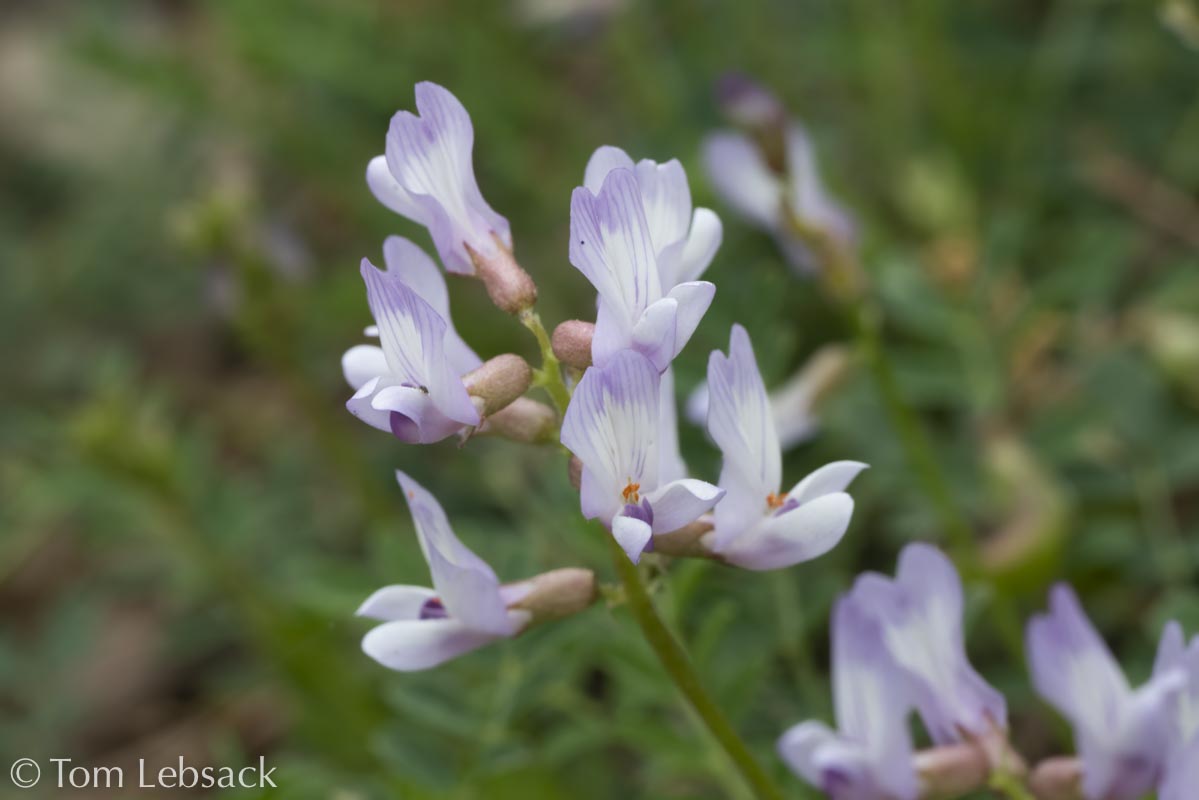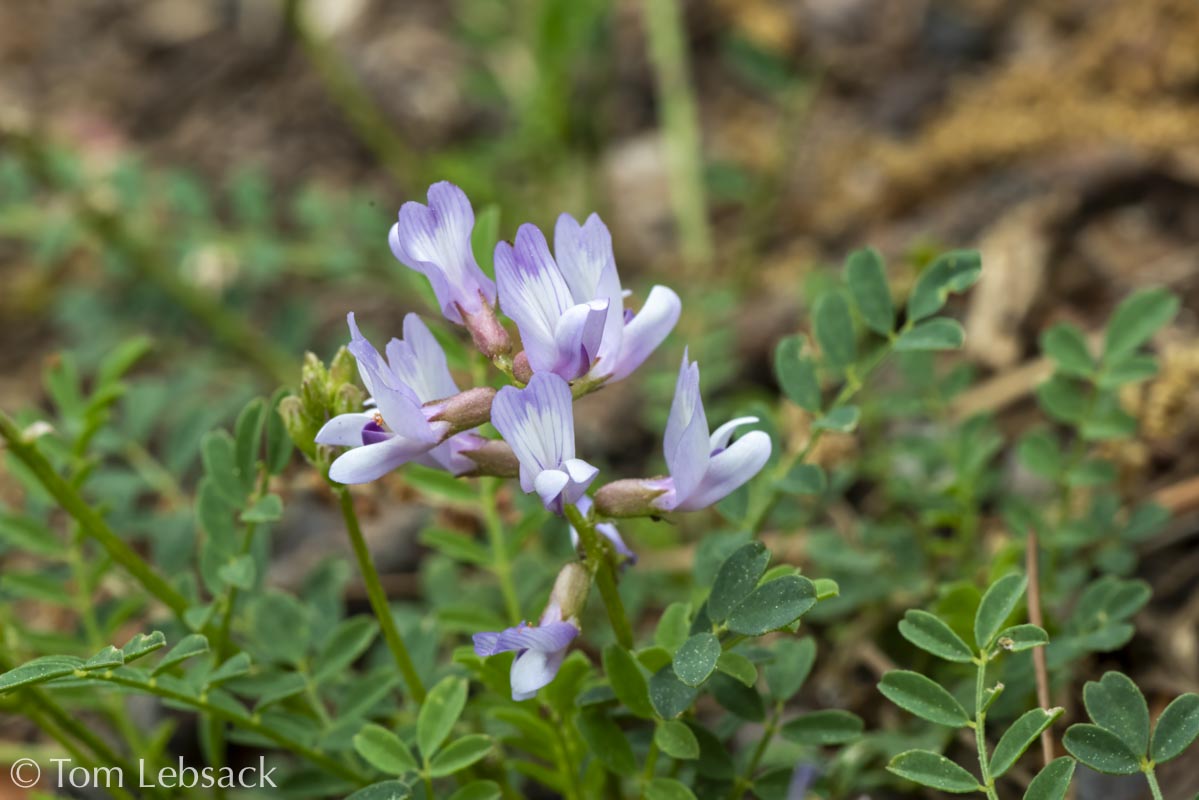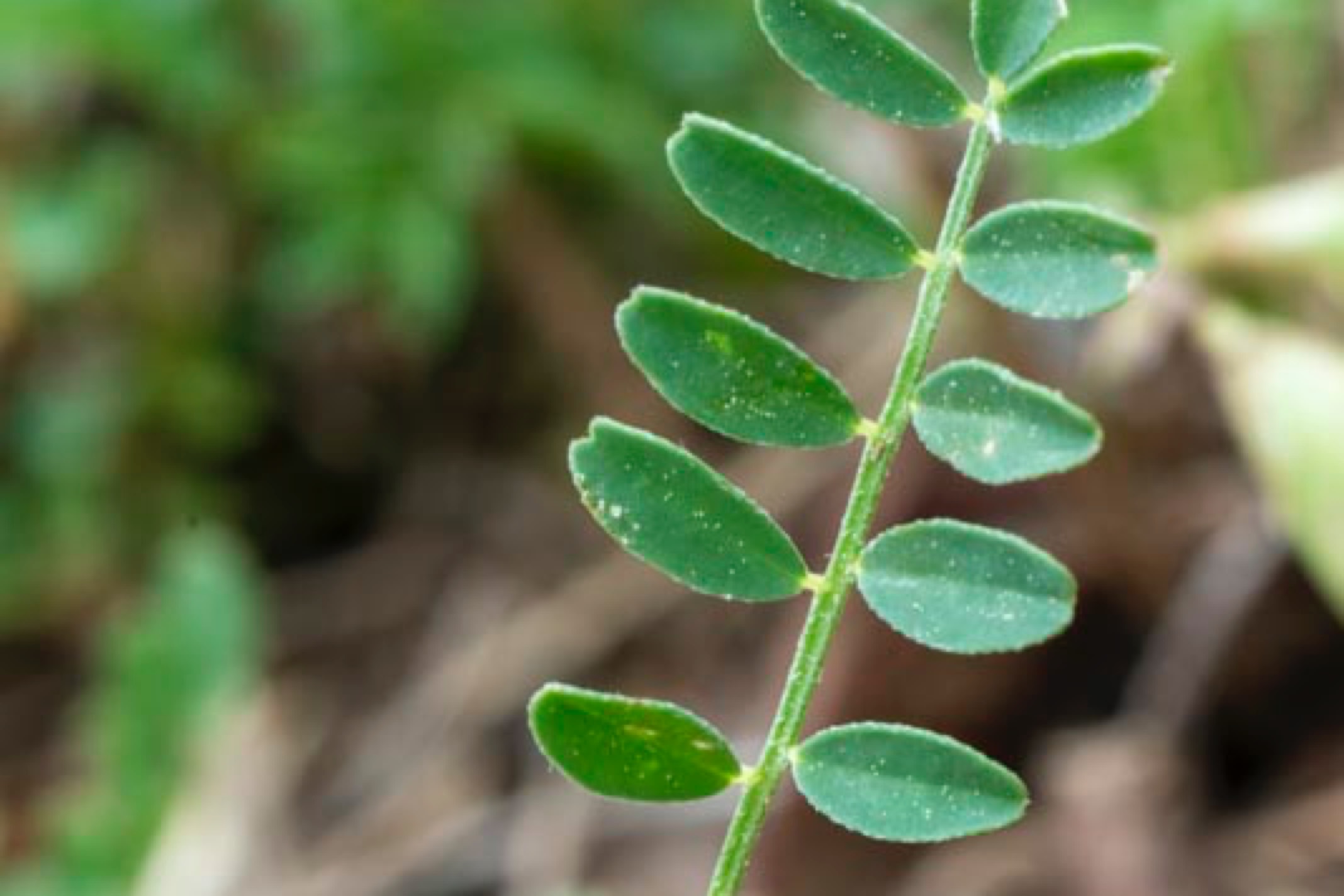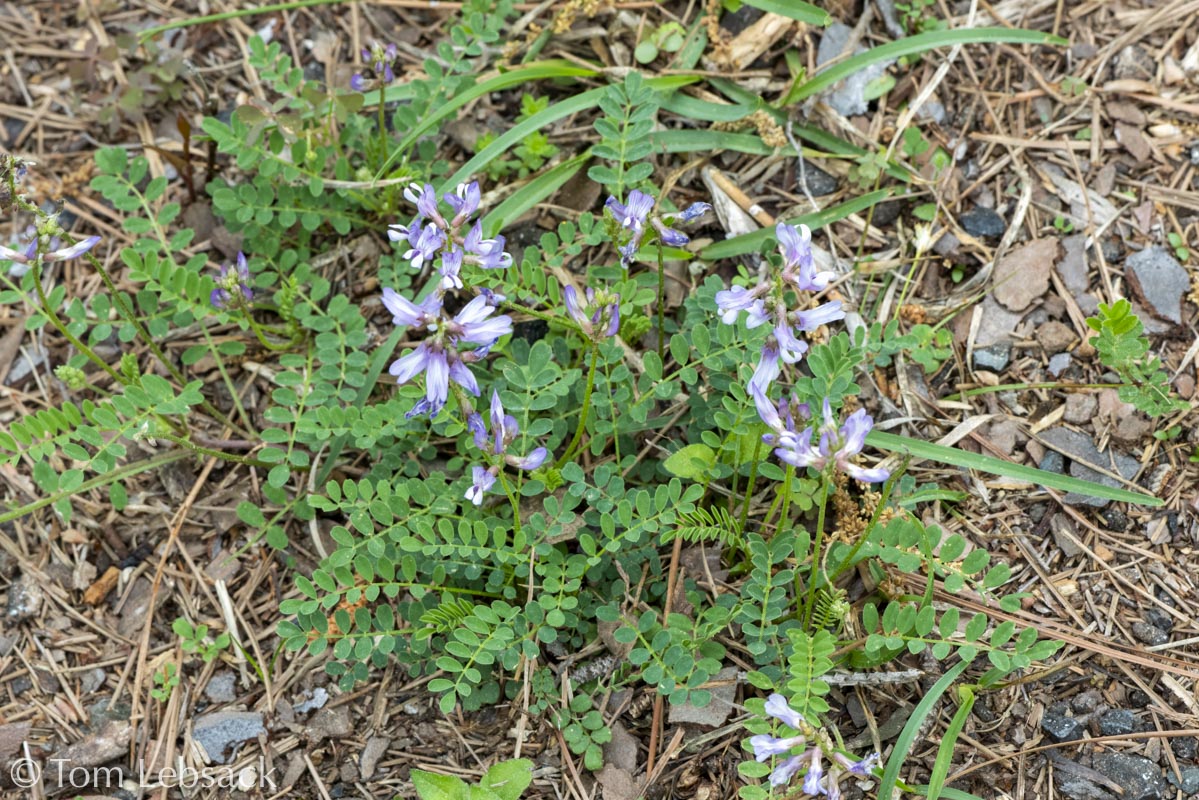Texas Wildbuds
Astragalus distortus var. engelmannii
(Arkansas Milkvetch)
| Scientific Name | Astragalus distortus var. engelmannii | USDA PLANTS Symbol | ASDIE |
| Common Name | Arkansas Milkvetch | ITIS Taxonomic Serial No. | 192467 |
| Family | Fabaceae (Pea) | SEINet Reference |
Click Here |
| Description | Habitat: Limestone, shaley, or clay soils in open areas in prairies, pine or oak woodlands and roadsides. Plant: Low-growing, perennial with spreading and ascending stems 4 to 12 inches long. Leaves: Odd-pinnately-compound leaves 1-1/2 to 4 inches long with 13 to 25 leaflets that have oval, obovate, elliptic-oblanceolate, or suborbiculate blades 3 to 11 mm long; tips are round, truncate, or retuse; surfaces are smooth above, sparsely hairy below. Inflorescence: Short raceme with about 10–21 small pea-like blossoms, less than 1/2-inch long; corolla is pink-purple, purplish, or whitish; banner is recurved and has a white area in the center with purple streaks; keel tip is lavender; calyx has stiff, short hairs and is less than 1/4-inch long with triangular, pointed lobes. Bloom Period: February to May. Fruit: Pods, usually ascending, green becoming brown or black; curved, 2/5 to 1 inch long. References: "Manual of the Vascular Plants of Texas" by Correll and Johnston, Flora of North America, SEINet and Kansas Wildflowers and Grasses. |
BONAP Distribution Map Map Color Key Map Color Key |
Texas Status: Native |
Banner photo of Castilleja indivisa and Lupinus ssp. taken along FM 1323 north of Johnson City, Blanco County
© Tom Lebsack 2025
Every attempt is made to provide accurate, up-to-date, and relevant information, but the completeness or accuracy of any information presented on this website cannot be guaranteed. I use authoritative references to insure high standards of accuracy and review and update the information frequently.
